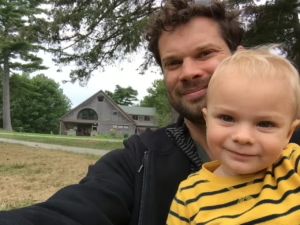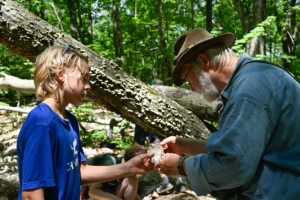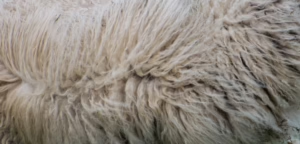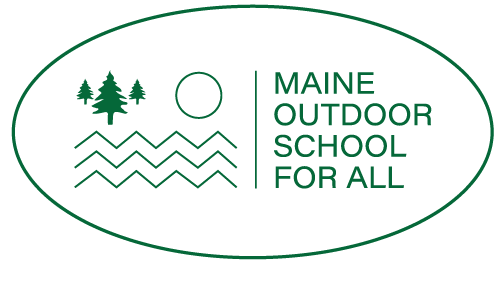It’s lambing and calving season at Chewonki Salt Marsh Farm and we’d love to introduce you to our farm residents.

So far this season, 20 lambs have arrived from 10 ewes, including 10 females and 10 males. Four of the lambs have piebald face markings – a recessive genetic trait that manifests in black and white patched coloring. Our lambs are a mix of Romney, Border Leicester, Coopworth, and North Country Cheviot breeds, and many of our flock are descendents of sheep lines that have been on our farm for 25-plus years.
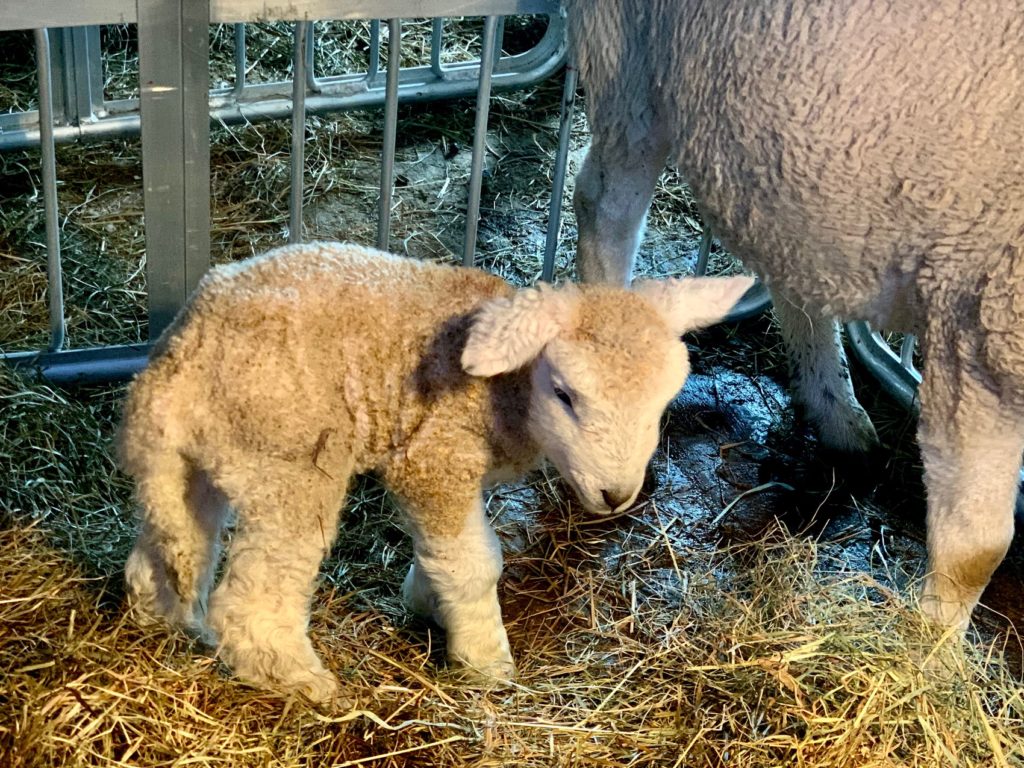
Our latest calf, Peanut, was born in early February to Poppy, a first-time mom. They’re together full time right now, which means that Peanut is getting all of his mother’s milk and growing by the day as a result.

A Lambing Season Highlight from Megan Phillips
In the midst of a markedly smooth but drawn out spring lambing season, Farm and Woodlot Manager Megan Phillips shared a particularly sweet moment from the past week: “Semester students are signing up to come to the barn and check in on ewes at midnight and 3:00 am each night. They call a farmer over a radio if they see anything of note or concern. Though we’ve had mostly quiet nights this season, I did get a call from Orchard students Maddie and Phoebe to come to the barn at 3:00 earlier this week. The two students were waiting for me as I arrived sleepy and harried but filled with adrenaline, and both were beaming and happy to report in whispered tones that they’d found four new lambs already up and nursing upon their arrival. Two mothers had delivered twins between the midnight and 3 am lamb watch. First-time mother, Kamala (sheep #46), and seasoned mom, Lainey (sheep #37), were both instinctually cleaning off and tending to their lambs, and both Phoebe and Maddie had an opportunity to cut umbilical cords and assist with the weighing of the babies. These moments – despite the fuzziness that results only a couple of hours later when I’m waking for morning chores on little sleep – are some of my favorites of the year. The barn is sacred and quiet in the middle of the night, the only soundtrack an occasional low “baa” between moms and babes, cows and sheep rhythmically chewing cud, and students’ muted enthusiasm.”

More About Farm Animals' Purpose at Chewonki
All of our animals have several jobs on our farm. Through responsible rotational grazing practices, lambs and sheep maintain a thriving and biodiverse pasture ecosystem that sequesters carbon. They add to the fertility of the soil with their manure while grazing our grasslands. We also harvest their wool annually and send it to a mill in northern Maine, where it is processed into yarn and other products that we use in our fiber studio. For example, we use cleaned, raw wool to make small felted projects, and yarn for weaving and knitting. We also sell our yarn in our online shop! Lastly, we raise many of our animals for food, so each year we send older ewes and most lambs to a local slaughterhouse, which processes them into cuts for our kitchen. We save their pelts and have them tanned for special giveaways to staff and friends.

Cows are also hardworking farm residents and provide three valuable products that start with the letter “M:” milk, meat, and manure. Cows and sheep rotate together on the pastures and graze in complimentary ways that benefit the grasslands. And, although we can’t harvest fiber from our cows (Highland cows are the only bovine that produces quality yarn fibers and we have Jerseys, Red Angus, and Black Angus), we milk our dairy cows daily for use in our kitchen and have a small number of beef cattle.


